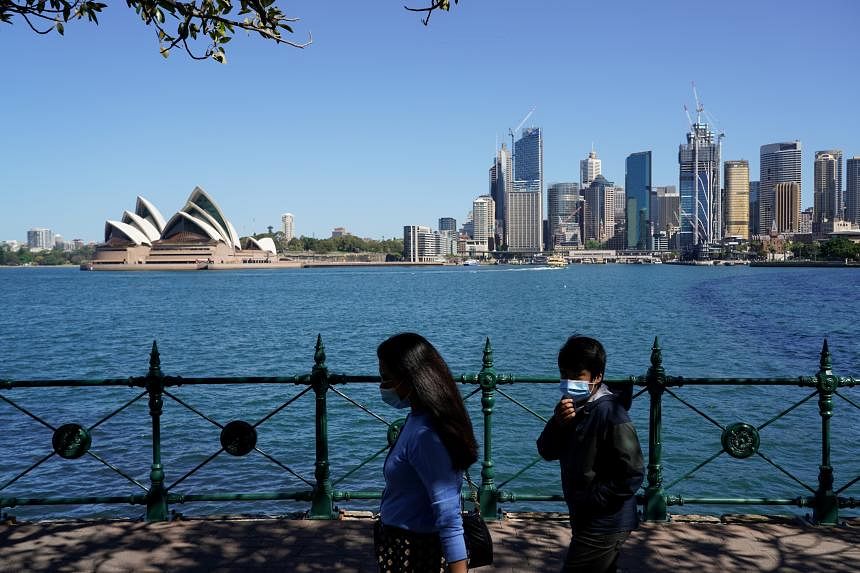SYDNEY - Australia’s economy expanded by more than expected in the second quarter, driven by exports and public investment, while household consumption remained weak as decade-high interest rates worked to cool demand.
Data from the Australian Bureau of Statistics on Wednesday showed that real gross domestic product (GDP) rose 0.4 per cent in the second quarter, slightly beating forecasts of 0.3 per cent. That compared with an upwardly revised 0.4 per cent growth in the first quarter.
Annual growth was at 2.1 per cent, above expectations for 1.8 per cent.
The world’s 12th-largest economy received a boost from net exports with the return of students, tourists and public investment, which more than offset the drag from business inventories.
“For all its challenges, the Aussie economy remains remarkably resilient,” said Mr Harry Murphy Cruise, an economist at Moody’s Analytics.
“Looking ahead, growth will be weak... Household budgets will remain under pressure. Government consumption will also moderate from its elevated levels, and business investment will ease on the back of squeezed profits.”
Household consumption, which used to be the engine of growth, remained subdued with just a 0.1 per cent gain in the quarter due to spending on essential goods and services.
Consumers continued to save less in the face of high costs and rising mortgage repayments which jumped by another 11 per cent in the quarter. Their savings ratio dropped further to 3.2 per cent, the lowest level since 2008.
The Reserve Bank of Australia (RBA) left interest rates unchanged for a third straight month on Tuesday, encouraged by signs that inflation is easing by more than expected and economic growth is slowing.
Markets see a good chance that the RBA is done, but a majority of economists expect one more hike by the end of the year to bring inflation to heel.
Treasurer Jim Chalmers said the GDP report was a “steady and sturdy” result in difficult circumstances and the economy is expected to slow considerably due to high interest rates and global uncertainty, particularly around China.
“We’re realistic about the challenges in the 12 months ahead but we are optimistic about the future of our economy and our country,” said Mr Chalmers, who does not expect the economy to tip into a recession.
Wednesday’s GDP report did show that productivity remained a concern, with one productivity measure of GDP per hour worked falling by a sharp 2 per cent, the third straight quarter of decline.
Unit labour costs continued to rise briskly, with an annual growth of 7.2 per cent in the quarter.
“While inflation has peaked, this will be a lingering cause for concern for the RBA,” Mr Sean Langcake, head of macroeconomic forecasting for BIS Oxford Economics, said of labour costs. REUTERS

